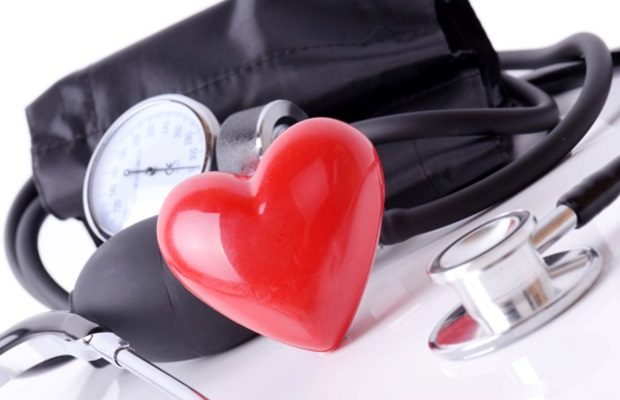Earlier detection of pulmonary hypertension in the community and expedited referral of high-risk or complex patients are recommended in the European Society of Cardiology (ESC) and European Respiratory Society (ERS) Guidelines for the diagnosis and treatment of pulmonary hypertension, published online today in European Heart Journal and the European Respiratory Journal.
The diagnosis of pulmonary hypertension, and thus initiation of appropriate management, is often substantially delayed. In young patients, frequently women, delays are often due to disbelief of severe illness in an otherwise healthy looking young individual. In older patients, co-existing conditions (such as hypertension, obesity, or cardiopulmonary diseases) may be blamed for the symptoms and pulmonary hypertension is missed. Patients with shortness of breath should seek medical help, and if the GP, cardiologist or pulmonologist cannot identify an appropriate reason, referral to an expert pulmonary hypertension centre is indicated."
Professor Stephan Rosenkranz, guidelines task force ESC chairperson, University Hospital Cologne, Germany
Pulmonary hypertension affects approximately 1% of the global population, and up to 10% of individuals over 65 years of age. It refers to high blood pressure in the lung circulation and differs from "hypertension" which is high blood pressure in the arteries supplying the rest of the body. People with the condition have thick, stiff pulmonary arteries which make the right side of the heart constantly work harder to push blood through, ultimately causing right heart failure. Pulmonary hypertension is a severe condition associated with substantially reduced life expectancy, if not successfully treated. Recent studies have shown that even moderately elevated pulmonary artery pressure or pulmonary vascular resistance are associated with increased mortality. This is why haemodynamic definitions had to be updated.
There are no specific symptoms, but patients usually suffer from progressive shortness of breath on exertion and reduced ability to exercise. Climbing stairs can be difficult. Many patients experience chronic fatigue, and fluid retention can occur as a result of impaired right heart function. Other symptoms include chest pain, dizziness and fainting, particularly in those with advanced right heart failure.
Guidelines task force ERS chairperson Professor Marion Delcroix of the University Hospitals of Leuven, Belgium said: "Being diagnosed with pulmonary hypertension, often after a considerable delay, and feeling physically limited has a tremendous psychological, emotional, and social impact on patients and their families. Psychosocial support is recommended in patients with pulmonary arterial hypertension (PAH), who often develop depression and anxiety and have to cut back on work."
Pulmonary hypertension is divided into five main groups based on the cause: 1) PAH, which is a distinct pulmonary vascular disease; 2) pulmonary hypertension associated with left heart disease; 3) pulmonary hypertension associated with chronic lung disease; 4) chronic thromboembolic pulmonary hypertension (CTEPH) due to recurrent blood clots in the lungs; and 5) pulmonary hypertension with unclear and/or multifactorial causes.
The guidelines cover the whole spectrum of pulmonary hypertension with an emphasis on diagnosing and treating PAH and CTEPH. For PAH, early diagnosis and initiation of treatment are key. Treatment options have improved within the last 15 years and three drug classes are currently approved. Most patients should receive a combination of at least two medications. Treatment decisions should be guided by the risk assessment strategy outlined in the document. Immunisation of patients with PAH against COVID-19, influenza, and pneumococcal disease is recommended.
In women with PAH, pregnancy can be associated with a substantial risk of maternal complications or even maternal death, especially when PAH is not well controlled with medical therapy. Therefore, it is recommended that women of childbearing potential with PAH are counselled at the time of diagnosis about the risks and uncertainties associated with becoming pregnant; this should include advice against becoming pregnant, and referral for psychological support where needed.
There are three options for treating CTEPH, which may be used alone or in combination. Pulmonary endarterectomy is the surgical removal of thromboembolic lesions from the pulmonary arteries and is the preferred strategy in eligible patients. Balloon pulmonary angioplasty is indicated in some patients unsuitable for surgery or who have persistent or recurrent pulmonary hypertension after surgery. During this procedure, a balloon is temporarily inserted into the pulmonary arteries using a catheter then inflated to move thromboembolic lesions and restore blood flow. The third treatment option is medication. Individual treatment strategies should be discussed in high volume centers with multidisciplinary teams.
Multidisciplinary input is central to the management of pulmonary hypertension. This is because a number of conditions can cause pulmonary hypertension, with left heart disease and chronic lung disease being the most frequent underlying causes. In addition, other conditions such as connective tissue disease, liver disease, human immunodeficiency virus (HIV) infection and congenital heart disease may cause PAH. Finally, a variety of imaging techniques, including computed tomography, cardiovascular magnetic resonance and echocardiography, are required to detect lung disease and chronic or recurrent pulmonary embolism, and to monitor right heart structure and function.
European Society of Cardiology
Posted in: Medical Condition News
Tags: Angioplasty, Anxiety, Blood, Blood Pressure, Cardiology, Catheter, Chest Pain, Chronic, Computed Tomography, Congenital Heart Disease, covid-19, Depression, Embolism, Exercise, Fainting, Fatigue, Heart, Heart Disease, Heart Failure, High Blood Pressure, HIV, Hospital, Imaging, Imaging Techniques, Immunodeficiency, Influenza, Life Expectancy, Liver, Liver Disease, Lung Disease, Lungs, Mortality, Obesity, Pain, Pneumococcal Disease, Pregnancy, Pulmonary Arterial Hypertension, Pulmonary Artery, Pulmonary Embolism, Pulmonary Hypertension, Respiratory, Surgery, Tomography, Vascular, Virus
Source: Read Full Article
